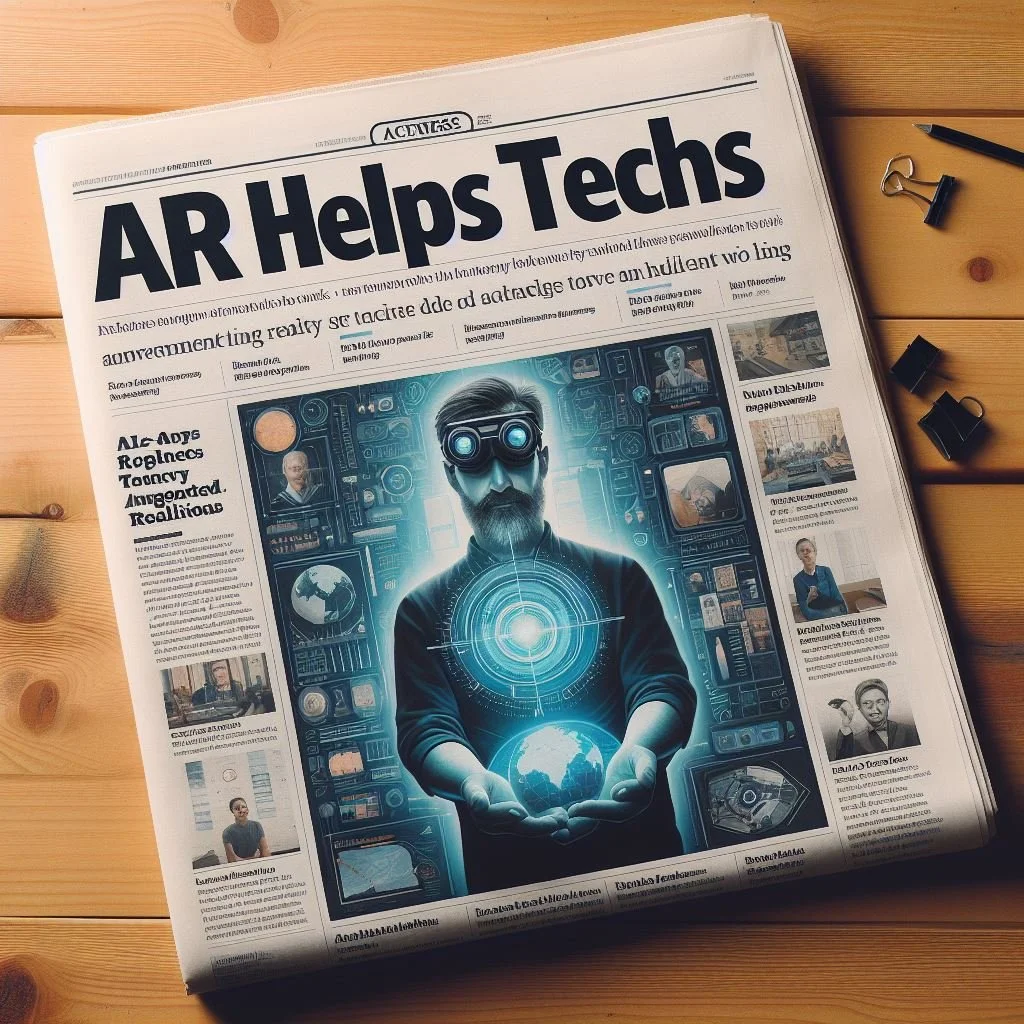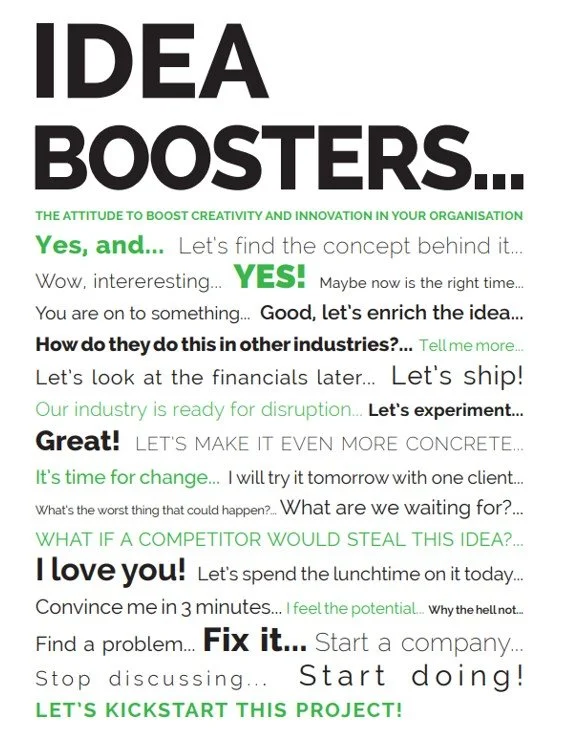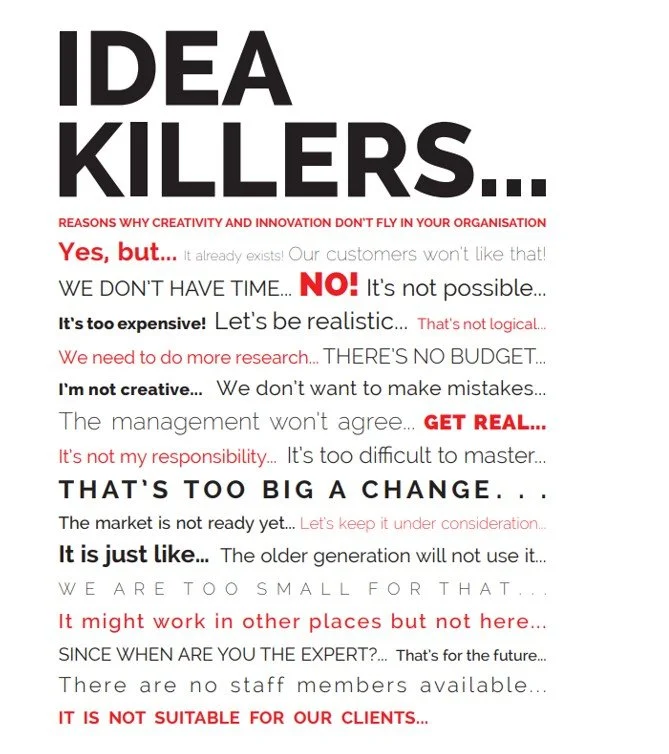AUGMENTED REALITY (AR) FOR
TECH SHORTAGES
BACKGROUND
A future thinking workshop was conducted with 12 participants to address a real socio-economic issue while providing opportunities to develop critical and creative thinking skills. The workshop also provided participants the opportunity to learn design fiction in the development of near-future scenarios.
As the workshop was only one day, desk and field research was conducted prior to the workshop to provide participants with reference material as stimulus for the exercise. The following brief was provided to participants prior to the workshop:
To better understand how augmented reality (AR) can help address the growing shortage of motorcycle technicians through a design fiction workshop. Participants will conceptualize, write, and produce a short narrative (less than 1,500 words) for a possible solution.
A short, graphic narrative was the chosen archetype. It was decided that this type of narrative would be fun for participants to create, as well as an excellent communication device for a variety of stakeholders. The goal was for the narrative to drive ongoing discussions, questions, and further speculation.
PRE-WORKSHOP
Workshop participants were provided the following background and context to prepare for the exercise.
There is an increasing shortage of motorcycle mechanics, which poses a challenge for motorcycle dealers and distributors to ensure timely maintenance and repair services for customers. The following are several key reasons for lack of trained technicians:
Compensation (especially compared to automotive technicians)
Working conditions
Perception of motorcycle technicians
Professional development
Respect
Physical requirements
College promoted over trades
General lack of interest
Ongoing attempts to attract and incentivize technicians have not provided effective solutions. Some types of incentives being used are:
Hiring bonuses
Tiered wages based on experience
Free manufacturer’s training
Health insurance and 401ks
Discounted tool programs
Career development to allow for expanded career opportunities
Welding and machining training
EV training
Computer programming training
Current uses of augmented reality (AR) are:
Training and upskilling in manufacturing
Digital work instructions in manufacturing
Quality assurance and inspections in manufacturing
Machine operator training and instruction
Heavy-equipment repair training and instruction
In addition to various references, mock news headlines were provided as additional stimulus. For example:
Honda Adopts AR for Service Training
Kawasaki Partners with Microsoft for Hololens Uttilization
Dealers Struggle To Fill Tech Roles
Trade Education Stigma Continues
Mike Rowe Promotes Trade Education
DURING THE WORKSHOP
An introduction to the agenda and design fiction was followed by a review of the background materials and mock headlines. Examples of short, visual narratives were shared as well as other examples posted on the room walls. It was explained that AR was not a futuristic technology and was being incorporated into more business and operational settings. This was to ensure participants understood that this exercise was not science fiction, but a plausible near-future scenario.
Several analysis and ideation tools were demonstrated as drivers for ideation. For example, SWOT analysis, Six Thinking Hats, SCAMPER, “What if” statements, and mind maps. In addition, all participants received IDEA BOOSTERS and IDEA KILLERS cards to assist during ideation.
Dr. Dave challenged participants throughout the workshop with questions and ongoing probes to help expand and narrow ideas. For example:
How can original equipment manufacturers (OEMs) such as Honda, Kawasaki and Yamaha help train technicians?
What will dealerships need to adopt AR and how will it be used?
What are novel ways AR is being used in different industries?
What are potential problems of AR usage in a dealership environment?
Who would develop AR tools for technicians?
Four groups of three participants were organized. The groups were instructed to discuss the background materials and overall assignment, ideate on possible uses of AR to address the growing shortage of motorcycle technicians, and narrow the list of ideas to the top choices.
Groups shared ideas and a dot-voting session was used to narrow the list. The participants agreed on the adoption of AR service manuals to help train and retain technicians. The chosen topic was:
A fictional account of a dealership service manager working with a local university and technical college to convince motorcycle OEs to develop AR service manuals.
Each group developed key story points using a seven-step story outline. In addition, the groups improved their ideas using the Six Thinking Hats analysis tool. Each idea was written on a single sticky note. All notes were placed on a master storyline map and the ideas were grouped and organized. In addition, several participants created rough illustrations to help visually communicate the ideas. Finally, each participant reviewed the storyline map and edits were finalized, along with new ideas or comments. The workshop addressed the following question:
What if augmented reality (AR) was used to improve recruitment and retainment of motorcycle technicians?
POST WORKSHOP
Approximately one week after the workshop, the following narrative was shared to participants. Based on the group’s ideas and mock story outlines, illustrations were developed along with the following short narrative. These elements were combined to create the following graphic narrative.
A follow-up online video discussion was held to drive further discussion, share additional comments and questions, as well as new ideas. Overall feedback from the participants was positive as all asked to be included in the next public workshop.
AN INSPIRED COMMUNITY
Gene is the service manager at Bob’s Powersports. Service work drives dealership profits, but new technicians are impossible to keep. Gene offers new technicians a variety of incentives, but they still eventually leave. His two experienced technicians keep talking about retirement. Gene is worried about the future. His boss also wants 30% more service revenue by the end of the following year. The stress is building. Gene starts jogging after work.
Gene reads a variety of industry journals. It seems like all industries are struggling to fill and retain service positions. He reads about robot waiters in Japan. He can’t imagine robots working on motorcycles any time soon. He knows finding and retaining good technicians is a serious problem.
Gene talks to service managers at powersport, auto, and Ag dealers. He is searching for a solution. Everyone has the same problem. No one has a solution. Everyone is worried about the future.
One Sunday he is talking to his friend Randy, the service manager at the local Tractor Supply store. Gene shares his tech issues with Randy. Randy also has the same worry. He tells Gene about his visit to a John Deere facility where they are using augmented reality (AR) to train factory workers. He has also seen beta versions of repair manuals in AR. Gene thinks he might be on to something.
Gene knows next-to-nothing about AR. He starts reading about AR and how it is being used. His nightly runs not only help with the stress but give him quiet time to think. He starts thinking about AR, maybe this could be a solution.
The following Tuesday, Gene calls the manufacturer service reps. Unfortunately, none of the manufacturers have solutions for the lack of technicians, and have no plans to develop AR service manuals or training. Even with this bad news, Gene is excited. He knows he is on to something.
He reads about Ford using AR in their factories. He reads about BMW testing AR for technicians. Gene sees opportunities as the auto industry is typically decades ahead of the powersports industry. Maybe he can drive AR usage in the powersports industry.
Gene talks about AR to his wife and kids at dinner and how it might help his tech problem. His daughter, who is attending the local university suggests visiting the university’s computer science school. She says it is rated high nationally. There are a lot of really good professors there.
After a few calls, he sets-up a meeting with a professor from the spatial computing lab. Gene researches the professor and finds out he is a leading authority on AR and VR. Gene stays up late reading and preparing for his meeting. He hasn’t been this excited in years.
What was supposed to be a one-hour chat, quickly turned into three hours. Gene and professor Tim are both excited about the potential of AR to solve the technician shortage. Any time someone from the “real world” finds interest in academia, a professor feels validated.
Gene found a guide; Tim found a possible real-world experiment. Tim knew about the challenges in the service sector and had written several papers about adapting AR for use in manufacturing. He feels AR could solve a similar problem in dealerships and thinks this could be an easy sell to his dean.
Gene introduces Tim to Jill. Jill is the Dean at the local technical college. Gene feels she could be a great partner, Tim agrees. Tim’s students will do the design and programming, and Jill’s students will be guinea pigs to test the AR modules, while Gene’s experienced technicians will help as advisors. It is starting to look like a win-win-win.
After several brainstorming meetings, Gene invites Tim and Jill to his cabin for the long, Labor Day weekend. After three days of intense brainstorming, they developed a plan. They would take sections from a motorcycle service manual, develop AR modules, and create tests to see if AR could train inexperienced non-technicians to properly service a vehicle. Tim would propose a few new courses to his dean for the project. Jill would identify a group of students to participate.
Tim’s new courses were approved and filled immediately. Jill created a panel of student advisors. The students were excited to work on real-world problems and the professors and teachers loved anything new to engage the students. Gene was an advisor and split his time between the shop, both schools, and family. Everyone was working non-stop, and the enthusiasm was high.
Tim’s students built a beta-version in two months; how to service and repair a motorcycle clutch. After multiple tests with Gene’s experienced technicians, students from the technical college, and non-technical students from the university’s English department, the team realized they were on to something powerful.
The tests revealed that an inexperienced person could properly and safely replace and service a motorcycle’s clutch just as well as an experienced tech. In addition, using AR proved to be more accurate and faster than a traditional hardcopy service manual.
Once the bugs were worked out and the test data was compiled, Gene invited his manufacturer service reps to a demonstration. As Tim and Jill presented their findings to the service reps, Gene could feel the buzz building in the room. The manufacturer service reps knew first-hand a lack of qualified technicians was a problem across the industry. They immediately reported back to their bosses, who reported to the motherships in Japan, Taiwan, and Europe.
After a few weeks, Gene heard back from the service reps. The manufacturers loved the idea but could not justify the investments to transfer all their manuals to AR. They also were worried about losing hardcopy manual sales. Gene laughed when he heard this; typical super conservative manufacturers. They’d rather be reactive than proactive.
“Did any of them hear about what happened to Kodak?” piped Jill as Tim rolled his eyes.
Soon, Gene, Tim, and Jill had an idea to keep this alive. Tim’s students would convert service manuals for the top three selling Honda and Kawasaki motorcycles into AR modules. In exchange for the source data from the manufacturers, the school would develop the modules for free.
The university setup an agreement with Honda and Kawasaki for access to the source files. In exchange for all the source data, the manufacturers would get access to the AR modules for their dealer networks. The manufacturers had almost no investment, limited risk, with lots to gain. The university would do all the development.
Microsoft soon joined the party, donating Hololens headsets to both schools. Things were moving quickly. Gene’s shop became a beta site for testing the modules. This wasn’t going to happen overnight, but the seeds were being planted.
As all this was happening, Jill created a new powersports technical program. The new program attracted more students to the college. In addition, Honda and Kawasaki donated various powersport products. Along with Gene’s shop, Jill’s powersports program became the main testing site for Tim’s students.
The small town soon became a hub for spatial computing and technical innovations. The university and technical college received additional state and federal grants. The news spread. An increase in out-of-state student applicants rose, increasing school revenue. Even better, Gene’s service work increased as customers realized his technicians were the best trained in the area. Customers also liked that the dealership was using cutting-edge technology to repair and service vehicles.
It was a crisp, Autumn evening. There were no clouds in the sky and the stars were everywhere. As Gene ran down the trail and looked up at the night’s sky, he was proud of everyone’s accomplishment. His boss’ goal of 30% increase in service wasn’t achieved yet, but he had more ideas.
He only had five more riding seasons before his experienced technicians might retire. He knew he had to keep moving; the clock was ticking. Gene was just getting started.


















